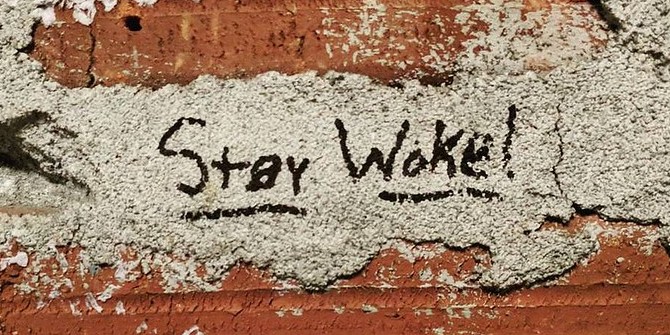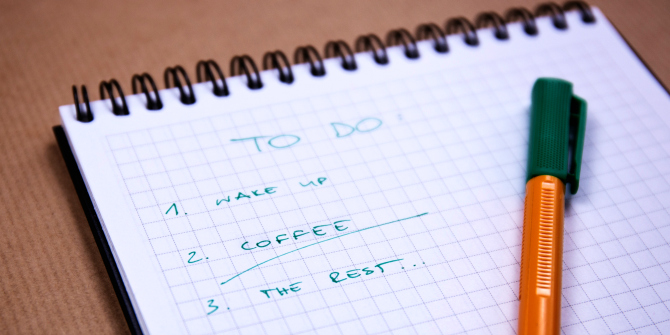 Since he became President, Donald Trump has repeatedly attacked the media, calling them “fake news” and the “enemy of the people”. Porismita Borah takes a close look at Trump’s relationship with the media, writing that despite his adversarial stance, he was and has been able to capture the news cycle. With coverage during the campaign amounting to essentially $2 billion in free advertising, the media played a large role in helping him to win the election.
Since he became President, Donald Trump has repeatedly attacked the media, calling them “fake news” and the “enemy of the people”. Porismita Borah takes a close look at Trump’s relationship with the media, writing that despite his adversarial stance, he was and has been able to capture the news cycle. With coverage during the campaign amounting to essentially $2 billion in free advertising, the media played a large role in helping him to win the election.
The 2016 US Presidential elections made headlines for its many controversies. From Hillary Clinton’s emails to Donald Trump’s promises to build a wall across the US-Mexico border, there were plenty of news stories to keep the media active during the primaries through to the general election. One of the most controversial issues that started during the election cycle and continues into Donald Trump’s two-month old Presidency is his relationship with the media. During his first news conference as President, Trump said “I have never seen more dishonest media…The news is fake because so much of the news is fake”. Trump’s first meeting with the press was in stark contrast with the usual rituals of a Presidential news conference. The day after his first press conference, Trump tweeted that the news media “is the enemy of the people”. His critics did not take this well. Besides liberals and the Democrats, two prominent Republicans spoke out strongly against Trump’s attempts to sully the media. Senator John McCain said dictators “get started by suppressing free press”. In an interview with NBC, former President George W. Bush criticized Trump’s remarks and pointed out that, if the US does not have an independent press, it will not be possible for the nation to tell other countries to encourage and cultivate press freedom.
While the discussions about the relationship between Trump and the media continues, political communication scholars and journalists alike are paying increasing attention to how the media might have played a significant role in Trump’s success in the Presidential elections. Scholars at the University of Wisconsin Madison have been conducting research on this subject since the primaries. A recent study used multiple data sets including those collected from the Republican primary debates, public events, media events, media appearances, Trump’s own tweets and retweets, news stories, blog posts and Trump’s delegate counts. They conducted multiple data analyses such as data visualizations, causality tests, and time-series models to examine how Trump increased his media coverage leading to his nomination. Their findings show that retweets of Trump’s posts positively predicted news stories and blog posts. Moreover, Trump’s volume of tweets is a negative predictor of news coverage, which means that when media coverage is low, he used “tweet-storms.” The authors also show that staged media events predicted concurrent media coverage. Trump’s unscheduled media appearances also predicted media coverage.

The researchers also showed that Trump successfully used staged events, unscheduled interactions, and social media to gain coverage during the primary season. Compared to the rest of the candidates during the primaries, Trump made himself more available to the media via rallies, press conferences, interviews, news programs and talk radio shows. An important dynamic in the emerging media landscape is that news about Trump generated a large number of online clicks, the new metric used to measure audience reach. As a result, although Trump’s media coverage was increasingly negative, he benefited from estimated $2 billion in “free media” during the first nine months of his campaign. Trump also used social media, particularly Twitter, to his advantage. Using Twitter even before he announced his candidacy, the social media tool gave voice to Trump’s message. The fans loved his messages and they never failed to defend him online. Trump’s messages on social media were also amplified by his followers. One of the most important dynamics of Trump’s Twitter use was that he was always trending and journalists picked up on these trending stories.
Although empirical research on the relationship between Trump and the media is just beginning, journalists have been discussing his relationship with the media for some time. A BBC report from November 2016 claimed that Donald Trump was created by the media. Others have written that Trump had a unique way of taking over the media cycle. There are also competing theories about his motives behind fighting with the media. Trump’s attacks on the media are either impulsive and ego-driven or they are manipulated and calculated strategies. For example, the media reported that the crowd size for Trump’s inauguration in January 2017 was smaller than Obama’s inauguration in 2009. These reports angered Trump and he lashed out at the media. With his constant bashing of “fake news”, he is appealing to his base. Trump has also used Twitter to avoid the media filter, something that resonates with his fans. He does not need the “fake news” to reach his fans. Twitter does the job for him.
Donald Trump’s use of the media during the primaries and post-elections is unique. He combined an adversarial stance toward the media and promoted practices that bypassed traditional models of media as the buffer between news sources and their audiences. This combination enabled Trump to capture a major segment of the news cycle and gather valuable media capital. Researchers might further investigate whether the dominant wisdom of the Trump-media relationship as ‘adversarial’ needs to be recalibrated in the light of the media and the 24-hours news cycle’s need for constant drama. What the future holds for Trump’s relationship with the media is somewhat difficult to predict. However, two issues are important takeaways from this relationship: first, this is a unique moment for political communication scholars conducting empirical research to make sense of the situation. Second, the media needs to take time to reflect upon their role in Trump’s rise to power and to come up with new strategies to manoeuvre this relationship with the President where the press can truly be the fourth estate.
Featured image credit: Gage Skidmore (Flickr, CC-BY-SA-2.0)
Please read our comments policy before commenting.
Note: This article gives the views of the author, and not the position of USAPP – American Politics and Policy, nor the London School of Economics.
Shortened URL for this post: http://bit.ly/2naZUpP
_________________________________
 Porismita Borah – Washington State University
Porismita Borah – Washington State University
Porismita Borah is an Assistant Professor in the Edward R. Murrow College of Communication, Washington State University. Porismita’s main areas of research interests are emerging communication technology in the context of politics and health. Porismita’s research has been published in many prestigious journals including Journal of Communication, Communication Research, Journal of Computer Mediated Communication and New Media and Society. To learn more about Porismita’s work, please visit her website.






